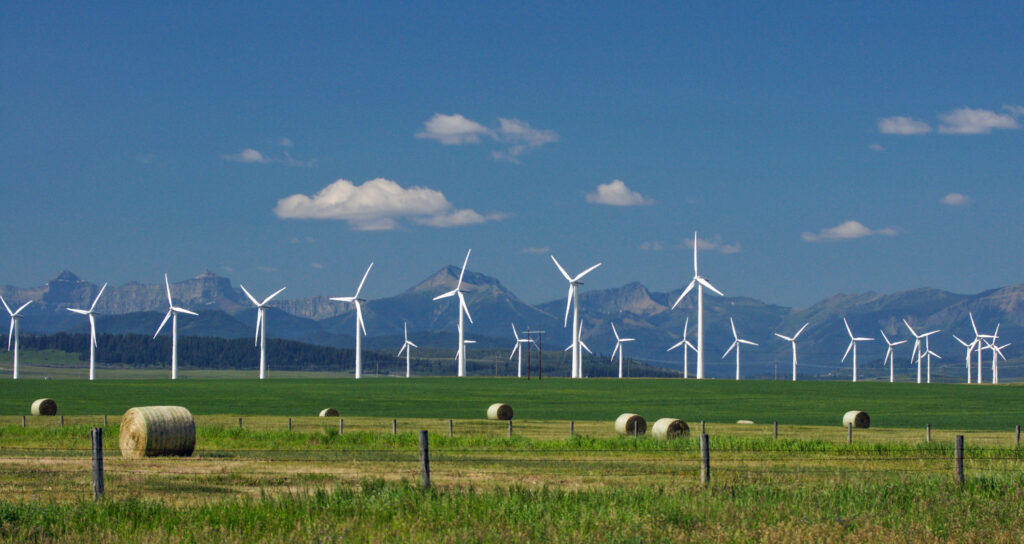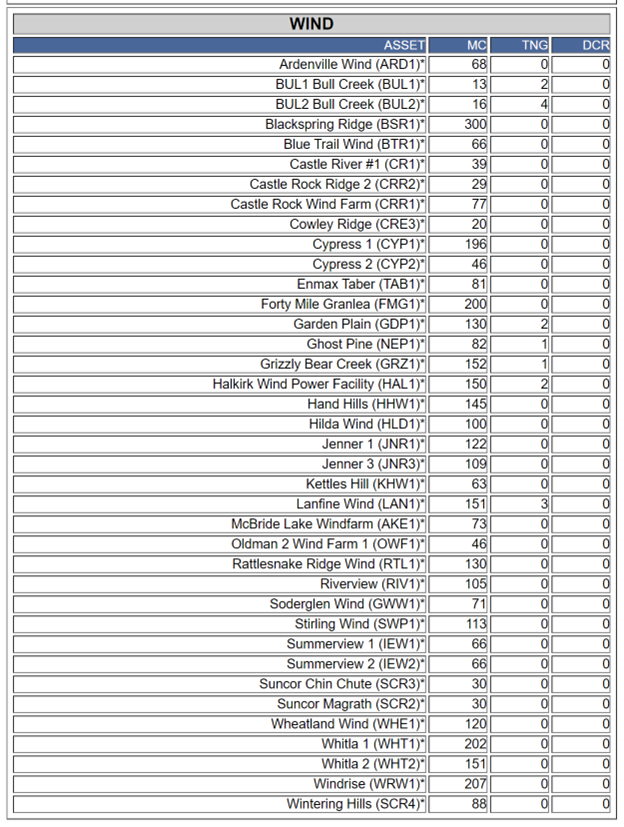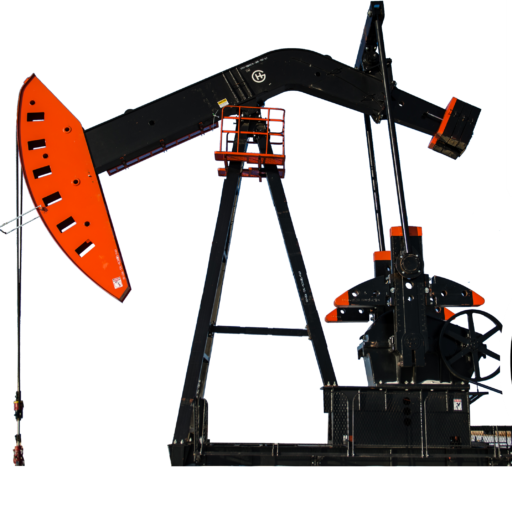Brian Zinchuk is editor and owner of Pipeline Online

Wind turbines in southern Alberta. Photo by Clive Schaupmeyer
The federal government is seeking to eliminate coal and natural gas power generation unless it has near-perfect carbon capture, and yet it was those very fossil fuel power sources that kept the lights from going out in Alberta at noon on Tuesday, Aug. 22.
According to the Alberta Electric System Operator (AESO), at 12:37 p.m., Alberta’s renewable energy power sources – wind and solar, were having a real rough day. Wind power generation was putting out 0.3 per cent of its capacity – just 13 megawatts out of an installed base of 3,853 megawatts. That’s less than one-third of one per cent. And this low wind state had been consistent for at least ten hours, during which time wind was less than 100 megawatts. Of Alberta’s 38 wind farms, consisting of hundreds of turbines and costing billions of dollars, only seven were producing any power at all. A total of 31 wind farms were producing zero power to the grid.

Power generation in Alberta at 12:37 p.m. on Tuesday, Aug. 22. MC is maximum capacity in megawatts. TNG is total net to grid, in megawatts, and DCR is dispatched, and accepted, contingency reserve. Alberta Electric System Operator.
At that moment, just one of Alberta’s two remaining coal-fired generating units was producing 30.5x the power of the entire wind fleet.

Wind power generation in Alberta at 12:37 p.m. on Tuesday, Aug. 22. Of the 38 wind farms, 31 were producing zero power. MC is maximum capacity in megawatts. TNG is total net to grid, in megawatts, and DCR is dispatched, and accepted, contingency reserve. Alberta Electric System Operator.
Solar was also having a tough day, producing less than a third of its capacity during the time of day when the sun is highest in the sky. Alberta was getting just 379 megawatts out of its installed base of 1,291 megawatts, or 29.4 per cent. This is much lower than usual for the noon hour in summer in Alberta, which usually sees around 1,000 megawatts from the 36 grid-scale solar farms in Alberta.
- 0100 Turnbull Project Manager0100 Turnbull Project Manager
- 0099 Mryglod Steel 1080p0099 Mryglod Steel 1080p
- 0097 Eagle Sky Ventures LTD0097 Eagle Sky Ventures LTD
- 0095 Fast Trucking nearly 70 years good at it0095 Fast Trucking nearly 70 years good at it
- 0053 Kingston Midstream Westspur Alameda Click Before You Dig0053 Kingston Midstream Westspur Alameda Click Before You Dig
- 0092 Turnbull projects big and small0092 Turnbull projects big and small
- 0046 City of Estevan This is Estevan Teaser0046 City of Estevan This is Estevan Teaser
- 0087 Lori Carr Coal Expansion0087 Lori Carr Coal Expansion
- 0077 Caprice Resources Stand Up For Free Speech0077 Caprice Resources Stand Up For Free Speech
- 0076 Latus only0076 Latus only
- 0061 SIMSA 2024 For Sask Buy Sask0061 SIMSA 2024 For Sask Buy Sask
- 0055 Smart Power Be Smart with your Power office0055 Smart Power Be Smart with your Power office
- 0051 JML Hiring Pumpjack assembly0051 JML Hiring Pumpjack assembly
- 0049 Scotsburn Dental soft guitar0049 Scotsburn Dental soft guitar
- 0041 DEEP Since 2018 now we are going to build0041 DEEP Since 2018 now we are going to build
- 0032 IWS Summer hiring rock trailer music
- 0022 Grimes winter hiring
- 0021 OSY Rentals S8 Promo
- 0018 IWS Hiring Royal Summer
- 0013 Panther Drilling PO ad 03 top drive rigs
- 0006 JK Junior
- 0002 gilliss casing services0002 gilliss casing services
- 9002 Pipeline Online 30 sec EBEX9002 Pipeline Online 30 sec EBEX
- 9001
And even hydro wasn’t putting out that much, either. Hydro was producing 325 megawatts out of an installed based 894 megawatts. But that’s likely because 286 megawatts of hydro was being held in the dispatched contingency reserve (DCR), making up nearly all the reserve of 369 megawatts.
In total, the 392 megawatts from the installed base of 5,144 megawatts of wind and solar was producing 7.6 per cent of nameplate capacity.
This low wind situation in Alberta occurred one day after a grid alert was issued from North Dakota to the Texas Panhandle, warning of low wind conditions and hot temperatures resulting in minimal wind power generation in that swath of states.
Not a freak occurrence
These are not freak occurrences, but rather a pattern Pipeline Online has repeatedly covered since the end of December, 2021. Alberta, which provides, highly-detailed, minute-by-minute public data of its open market electrical grid, routinely sees days like this, usually once or twice a months, and has done so almost every month of the last 20 months.
The federal government released its draft Clean Electricity Regulations on Aug. 10. Those regulations are meant to make the Canadian electrical grid reduce its greenhouse gas emissions to the point where it will be net zero emissions by Jan. 1, 2035. That’s 11 years, four months and 21 days from the day the draft regulations were posted.
The emissions regulations are so stringent that even with a carbon capture unit capable of 90 per cent capture, coal generating units would still be nearly five times over the allowed limits of emissions. Natural gas power generation would require carbon capture units or shut down within 20 years. In the case of coal-fired Boundary Dam 3, the carbon capture plant has a parasitic loss of about a quarter of the power generated. It also cost a billion dollars in 2014. Natural gas units without carbon capture would only be allowed to operated a total of 18 days per year under the proposed regulations. And there are no natural gas units of commercial scale equipped with carbon capture in Canada to make comparisons to.
The federal government has been strongly promoting greater implementation of wind and solar, including a recent $50 million contribution on behalf of Cowessess First Nation’s Bekevar Wind Project in southeast Saskatchewan. As Alberta relied on fossil fuels for more than 92 per cent of its power generation at noon on Aug. 22, a scenario relying up wind and solar, without natural gas backup, would have seen massive blackouts across the province.
- 0100 Turnbull Project Manager0100 Turnbull Project Manager
- 0099 Mryglod Steel 1080p0099 Mryglod Steel 1080p
- 0097 Eagle Sky Ventures LTD0097 Eagle Sky Ventures LTD
- 0095 Fast Trucking nearly 70 years good at it0095 Fast Trucking nearly 70 years good at it
- 0053 Kingston Midstream Westspur Alameda Click Before You Dig0053 Kingston Midstream Westspur Alameda Click Before You Dig
- 0092 Turnbull projects big and small0092 Turnbull projects big and small
- 0046 City of Estevan This is Estevan Teaser0046 City of Estevan This is Estevan Teaser
- 0087 Lori Carr Coal Expansion0087 Lori Carr Coal Expansion
- 0077 Caprice Resources Stand Up For Free Speech0077 Caprice Resources Stand Up For Free Speech
- 0076 Latus only0076 Latus only
- 0061 SIMSA 2024 For Sask Buy Sask0061 SIMSA 2024 For Sask Buy Sask
- 0055 Smart Power Be Smart with your Power office0055 Smart Power Be Smart with your Power office
- 0051 JML Hiring Pumpjack assembly0051 JML Hiring Pumpjack assembly
- 0049 Scotsburn Dental soft guitar0049 Scotsburn Dental soft guitar
- 0041 DEEP Since 2018 now we are going to build0041 DEEP Since 2018 now we are going to build
- 0032 IWS Summer hiring rock trailer music
- 0022 Grimes winter hiring
- 0021 OSY Rentals S8 Promo
- 0018 IWS Hiring Royal Summer
- 0013 Panther Drilling PO ad 03 top drive rigs
- 0006 JK Junior
- 0002 gilliss casing services0002 gilliss casing services
- 9002 Pipeline Online 30 sec EBEX9002 Pipeline Online 30 sec EBEX
- 9001
